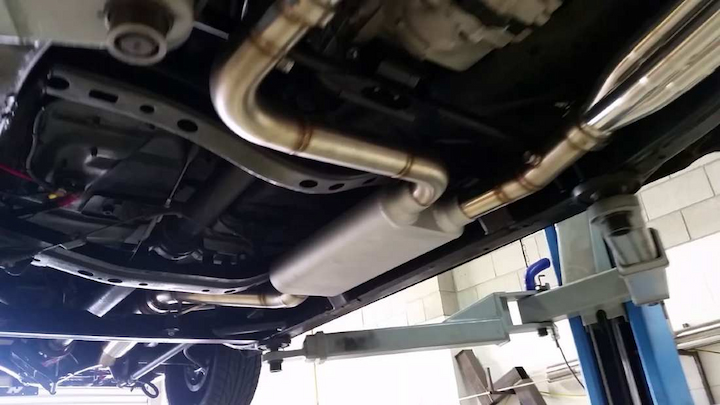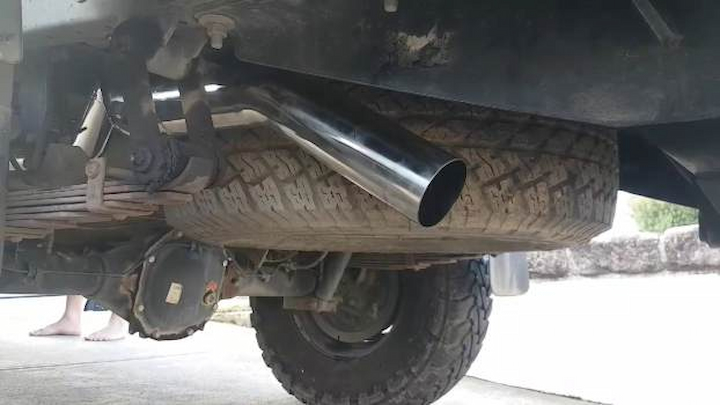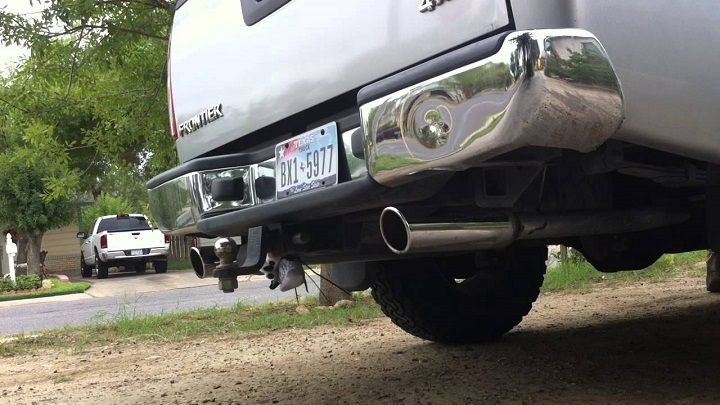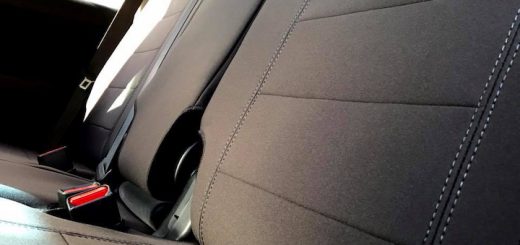The Advantages of Nissan Navara Aftermarket Exhaust Systems
If you’re a Navara D40 or STX550 owner, there’s a good chance that you’ve considered upgrading your exhaust in the past. These mid-sized Nissan workhorses are some of the most popular utes in Australia, especially the V6 turbo-diesel STX550, but it’s no secret that a good-sized chunk of their otherwise usable horsepower is being stifled by a restrictive exhaust system.
Upgrading the Navara’s anemic 2.5” exhaust system with an aftermarket 3.0” system is the way to reclaim those lost horses. It doesn’t take long to swap exhausts on the Navara, and you’ll be amazed by how much of an impact it’s going to have on your ute’s performance and sound.
Hear and Feel the Difference

Let’s be honest: of all the performance mods you could make to your Navara, upgrading the factory exhaust is going to be the most straightforward and the most beneficial. The improvement in exhaust scavenging and evacuation that you’ll get with a stainless steel Navara D40 exhaust upgrade is enough to safely produce a 10% power increase without altering any of your engine’s or turbo’s OE performance parameters.
A properly tuned, less restrictive exhaust system allows an engine to produce more power throughout it entire operating curve. Just a 0.5” diameter increase on an STX550 or D40 exhaust system translates to:
- A richer audible, with better acceleration and throttle response;
- A significant increase in low-end torque; and,
- More peak horsepower at higher RPMs.
And because an upgraded stainless steel exhaust system does away with heat-retaining OE plumbing, more power-robbing heat can be quickly evacuated away from the engine, helping to reduce the likelihood of EGT (exhaust gas temperature) sensor problems, and an inevitable increase in fuel consumption.
Everything You Need for Your Navara to Breathe Better

Upgraded Navara D40 exhaust systems are bolt-in replacements for the Nissan’s factory exhaust, and are available in either turbo- or cat-back configurations for 2.5L with manual transmissions, or turbo-back configurations for 3.0L V6s with automatic transmissions. They use all the Navara’s OE exhaust mounting points, don’t require any cutting or welding, and include:
- A turbo dump pipe, with 200 cell diesel catalytic converter;
- A front connector pipe with double braided flex joint;
- A complete tailpipe assembly;
- A choice of straight pipe, muffler, or resonator; and,
- All mounting gaskets and stainless steel fasteners.
Precision TIG-welded flanges inside and out, and mandrel-bent curves are standard features of these Aussie-designed exhaust systems. Sloppy welds and conventional pressure-bent pipes contain turbulence-inducing spatter and kinking on their inside surfaces, while TIG-welding and mandrel bending ensures smooth, turbulence-free surfaces at flanged ends and curve radiuses. There’s no loss of exhaust velocity anywhere inside these high-quality STX550 and D40 exhaust systems: gases exit quicker, letting your engine breathe better.
All the Advantages of Grade 409 Stainless Steel
When it comes to designing Nissan Navara D40 exhaust systems that are going to last just as well as they perform, grade 409 stainless steel tubing is the only material that’s worth considering. Not only does titanium-stabilised grade 409 resist atmospheric and exhaust gas corrosion, it also has 60% more heat transfer capacity than either 304 or 316 stainless steels.
Grade 409’s other advantages include:
- Continuous heat resistance up to 675°C, with intermittent resistance up to 815°C;
- High resistance to fatigue as a result of heat cycling or excessive vibration; and,
- Easy to repair with any type of arc welding process when necessary.
Grade 409 is also known for its tendency to form a light layer of oxidation in most environments. With 409’s high chromium oxide content of 10.5 -11.7% though, this layer of surface oxidation actually provides an essential barrier layer between the alloy and the environment. Ultimately, grade 409 is the ideal stainless steel for an upgraded Nissan Navara D40 exhaust system that’s capable of producing its own chemical protection at a price point that other stainless steel can’t come close to.
Always Insist on Heat-Resistant Enamel Coatings

In addition to their high chromium oxide content, upgraded STX550 and D40 Navara exhaust systems also benefit from full heat-resistant enamel coatings. High-quality thermal coatings add the extra protection that’s needed to lock heat into an exhaust system and prevent it from radiating onto other components or into the cab.
Unchecked head radiation can be markedly problematic on hard-pulling V6 STX550s. That’s why the dump pipes on 3.0L turbo-back upgrades are Cerachrome coated. This ceramic coating is designed specifically for >1000°C operating environments where the combined effects of extreme heat cycles and environmental exposure can be particularly challenging to counter.
Ceramic coatings like Cerachome are ideal for:
- Reducing radiated heat levels that can play havoc with engine bay temperatures;
- Improving exhaust scavenging and overall engine efficiency; and,
- Providing extra oxidation protection from high-temperature exposure.
In short, if you’re thinking about upgrading to a 3-inch exhaust on your STX550 or D40 Navara, you want to insist on one that’s thermally coated.
The Final Word
At the end of the day, if you own a Navara, you already know how capable they are. With two of the top mid-sized turbo diesels on the market, especially in the V6 STX, all your Navara needs is a free-flowing exhaust system that’ll let it sound and perform the way you know it can.
With a stainless steel Navara D40 exhaust upgrade, you’ll instantly hear and feel the difference that a 3.0″ system makes over 2.5″ stock pipes. You’ll have the power to pass or pull trailers with confidence, and it’s the perfect upgrade to make when it’s time to replace a muffler or other pipe.












